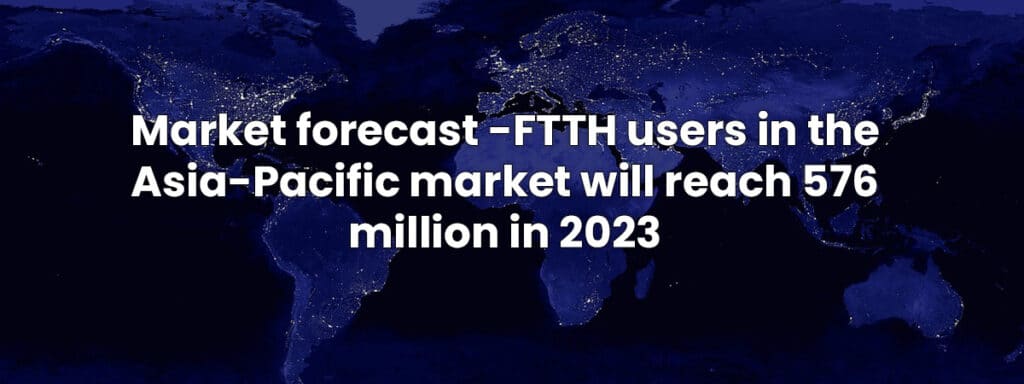Recently, the FTTH Asia Pacific Conference was held, and a new market panorama was released:
FTTH/B users reached 428 million, and FTTH household coverage exceeded 550 million.
Singapore, China, and South Korea top the list in terms of total penetration.
In the Asia Pacific market, China, Japan, and South Korea dominate in terms of FTTH household coverage.
Thailand and the Philippines are behind China with 35% and 28% in terms of FTTH household coverage annual growth rate.
The FTTH Asia Pacific Council study looked at the deployment of FTTH/B and other fiber optic architectures in 21 countries in the region. Overall, the optical fiber take-up rate in these countries now reached 77.6%, an increase of 10.1 percentage points compared to the previous year. Compared with 2014, the number of FTTH/B users in the Asia-Pacific region has quadrupled, and the number of household coverage has increased by 1.7 times. As of the end of December 2018, the number of FTTH/B households covered in these 21 countries was close to 550 million, and the FTTH/B network covered 61.5% of households in the region.
China remains the leader, accounting for 74% of FTTH/B household coverage in the Asia-Pacific region. In terms of household coverage, the highest annual increases were in Thailand (35%), the Philippines (28%), Sri Lanka (25%), Kazakhstan (24.9%), and Indonesia (24.6%). In terms of multi-year user growth, the largest increases were in the Philippines (168.6%), Bangladesh (149.6%), Indonesia (59.5%), Thailand (37%), and New Zealand (30.2%).
PON is still the preferred connection technology in the Asia-Pacific region, and FTTH GPON is still the standard for fiber-optic networks in the Asia-Pacific region. The proportion of MDUs (Multiple Dwelling Units) is high compared to other areas due to high population density. Additionally, LTE is maturing across the region, with South Korea, Japan, and some city-states leading the way, with China playing a key role. LTE is also gaining popularity in some less advanced markets due to various drivers including increased competition, falling prices, and a younger generation of digital users.
According to the report, by 2023, households covered by FTTH networks in the Asia-Pacific region will reach 649 million, while FTTH users will grow to 576 million.
Venkatesan Babu, President, of Asia Pacific, FTTH Council, said: “Across the Asia Pacific region, public-private partnership projects and national broadband initiatives are driving the growth of the FTTH market. The development of optical fiber in copper and 5G will facilitate the deployment of optical fibers and promote investment by public and private players. key factor. Fiber deployment is booming in many countries at this stage, and more and more consumers are realizing the advantages of fiber. However, there are still many things that need to be done for every citizen and business to benefit from an all-fiber network. It’s a long way to go.”
The annual study is conducted by IDATE DigiWorld, and the FTTH Asia Pacific Council shares these updated figures each year during its meetings.

